Aries Cerat Heléne DAC and Incito S preamp
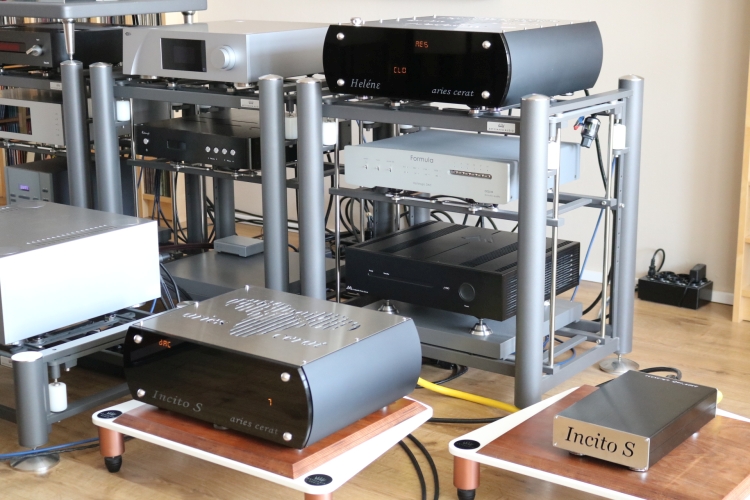
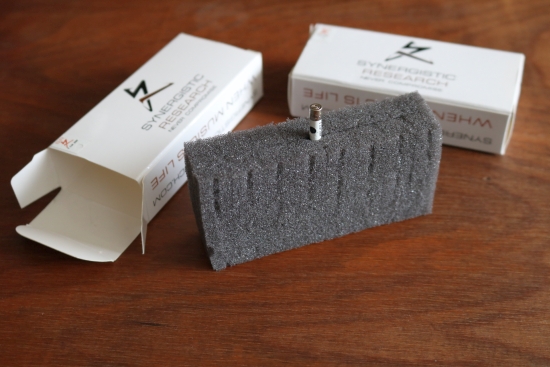
Synergistic Research Fuses
Along with the Aries Cerat components, I was also supplied with Synergistic Research Orange Quantum Fuses by Kempelektroniks to try in place of the standard fuses. I know that some people will frown upon the very notion that something as seemingly insignificant as a fuse might cause any audible effect.
My personal experience with audiophile fuses started, oh, I don’t know, maybe 10, 15 years ago. After having observed ridiculously large differences between a standard Bals Schuko and one that was treated by Hifi-Tuning, I also tried their fuses as well as some others such as AHP. Priced at 25 euro, and given that a standard fuse costs maybe 25 cents, these were already found to be costly. Extrapolate this to the Synergistic fuses that cost 160 euro each, and I can imagine the uninitiated will walk away while shaking their heads.
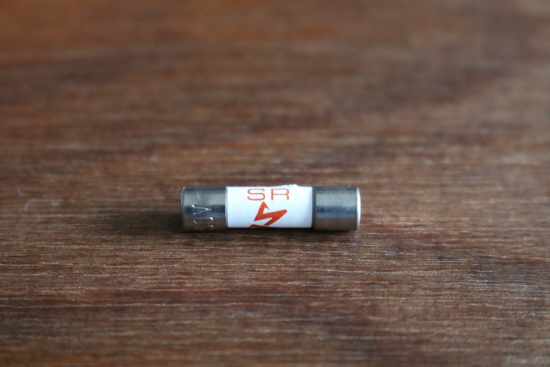
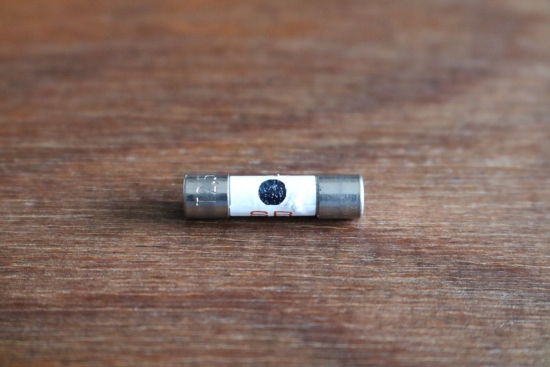
I don’t know why and I won’t try to find a reason but after swapping, all it takes is a couple of notes to hear that the Orange fuses make one heck of a difference. Yes, I’d almost be tempted to call it a day and night kind of difference! The impact is honestly as large as that of swapping a power cord.
What you notice instantly, is how the soundstage increases in size, becoming both wider and deeper, and secondly, how the sounds within it gain richness and finesse. With audio accessories that add richness, usually, you also lose some dynamics or attack but in this case, this does not seem to be the case, not in the midrange, at least. The overall resolution remains great – it does not seem to increase but neither does it diminish, but because the stage is imaged considerably more widely, the sounds within it are portrayed more in a free-floating manner and with gobs of surrounding air as opposed to the comparatively more clumped-together presentation of the standard fuses. Another notable change, and something that will make one gulp, is that the Orange fuses make standard fuses sound lean and tonally gray. It’s almost surreal.
However, once I got over the euphoria of the much luxurious sound, I noticed that the bass behavior had also changed. Even though the clarity and texturing in the midrange did not at all seem to be negatively impacted, and the bass actually seemed to have become meatier, there was now a bloom down below that made for a seductive and smooth feel but that also rounded off the transient behavior, making the sound feel arguably less urgent and rhythmic. For me, this was a deal-breaker and therefore, I reviewed the Aries Cerat components with standard fuses. But I know that I am quite specific in the way that I want my bass and imagine that there will be many for whom the benefits will greatly outweigh the downsides.
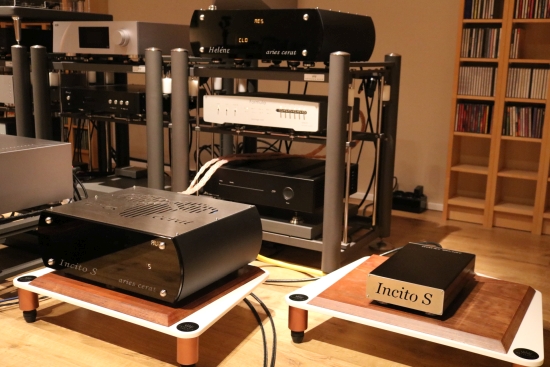
Conclusion
When you frequently review products, and especially when the target is usually the high-end segment, true surprises are few and far between. So, it’s a treat when a product comes along that truly brings something new to the table. The Aries Cerat Incito S is such a product. It simply does it all while introducing virtually no character of its own. It is, quite simply, the best analog preamp that I have heard so far, irrespective of the cost. And based on its superb performance, it’s not at all inappropriately priced. Add to this the classy exterior, the tank-like build, and what will likely be a lifetime of service, and it becomes something of a bargain.
Although I feel that the Incito S is the star of the show, the Heléne DAC should not be underestimated. It may not be as innovative as the preamp or quite as unique compared to the best converters that I have heard but it is one heck of a musically engaging and thoroughly lyrical DAC.
It should be noted that the Heléne sounds different depending on the input that is used. With AES/EBU or S/PDIF, it sounds rich and lush, even a little voluptuous, but dynamic, if a little laid-back in terms of midrange expression, but always highly seductive. With USB, it seems that all of its powers are released, and then, it becomes tighter, faster, more open and articulate, and highly expressive, while retaining its seductive qualities. With USB, I find it to be most impressive, and indeed, when using this input, I feel that it provides a level of performance that is particularly hard to beat in its price class.
Feedback
Hello Christiaan, thank you for the great words and remarks on our designs. The bias system is a major tool for adjusting and finetuning the sound to taste because each system is different. It might have been a good opportunity to check what that system does because it affects the sound a lot. For example, and from data we have, many users use different settings to match the sound to their speaker/system character and mostly, taste:) Best, Stavros, manufacturer.
Please note that with a higher bias setting, the Heléne DAC would likely play tighter and more articulate than as reviewed. Michel Warlop, distributor
HFA reply: Indeed, my experience with bias systems has illustrated that the bias setting can have a large influence on the sound, typically making it warmer and more relaxed or cleaner and tighter, by adjusting the bias higher or lower. In this case, both components were delivered with the bias set to the theoretical ideal positions and the values did not waver over the course of the review. Because both turned in such great performance, I did not see a need to remove the covers for tweaking.

Initially, the Incito S preamp had been awarded the “Magnificent Masterpiece” award. It’s dangerous to award the highest-tier award to a relatively affordable product but I was so impressed with the Incito S that I felt it deserved this. After all, it was the best preamp that I had heard until that point.
Then, the Impera Reference, a higher-level model by the same brand, came along, providing even more impressive performance. In comparison, the Incito S is now relatively less magnificent, so, does it still deserve its title? Well, at its relatively “affordable” price point, the Incito S certainly still offers magnificent performance. It’s just that if you spend more, it can get even better.
As in the Highlander movies, there can be only one, right? So, the badge of honor must now go to the Impera Reference. Just keep in mind that the Impera Reference is even more Magnificent, and, I suspect, the models above it, even more so.
More Aries Cerat
Incito S and Impera Reference Compared
Videos on the Hifi-Advice YouTube Channel
Aries Cerat Helene and Incito S preview
HFA visits Callas Audio
HFA Front Page
External Links
Distributor for the BeNeLux: Ultisone
Dealer for Belgium and Luxembourg: Alpha High End
Manufacturer’s website: AriesCerat
Dealer for the Netherlands:
www.callas-audio.nl
Lelystad 8241AK
info@callas-audio.nl

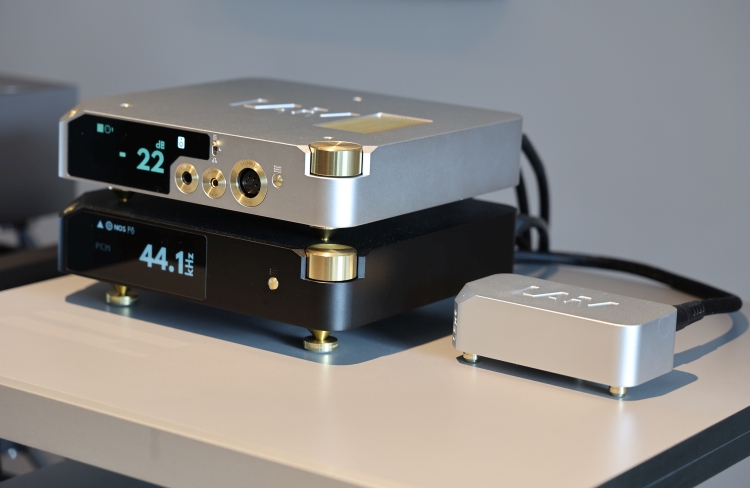





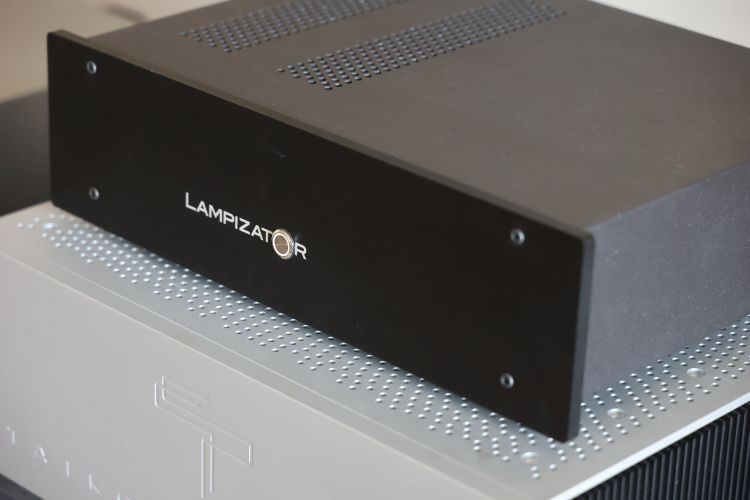
Christian,
Great review on a brand I’ve heard a little about but never seen a review of. And you’ve certainly proven what are some truisms for me, a preamp is crucial to ultimate sound quality, and all things being equal tubes are best. 😉 Now all things are rarely equal of course but that Incito preamp sounds pretty special I’ve always found a tubed preamp to have an outsized effect on overall sound quality. I doubt I’ll ever hear one but would love to.
Cheers,
Jon
Thanks, Jon, the Incito S truly is something else. And Ron tells me that the bigger preamp “walks all over it”… Gulp. I thought hard about which award to give it but even if I will have no higher praise than “Magnificent Masterpiece” to award, should I ever review the Impera preamp, I decided to award it to the Incito S.
Jon,
I discovered Christiaan’s website quite by chance recently. Since then, I stay tuned.
I am the very happy owner of an Aries Cerat *Incito* preamp (not the S version, so mine has an embedded power supply; the S version has a separate PS).
It easily replaced my YBA 1 preamp (which had a separate PS).
The Incito changed my system. That thing is not of this world. Period. Some say that Aries Cerat preamps are the only ones which decide the aficionados of passive preamps to abandon their fetish.
I attend to live concert regularly, so I do not like “typical” tubes devices (honey-topping on everything). This one is truly different. I was amazed by the amount of both body&liveliness, distinction&exuberance, flesh&transparency it could deliver. A dizzying ability to deliver qualities that other high-end devices have accustomed us to consider as opposites. Here, they are reconciled/synthesized with a stunning mastery.
Try to listen to one.
FYI, my *power amplifier* is a YBA Signature Classic stereo (100w), very “liquid”-sounding.
(I also listened to a whole Aries Cerat system, in a very good room: gobsmacking…)
Orfeo that’s very cool and quite a good system you have YBA is another brand somewhat underrepresented here in the US that I’ve never heard. The Incito sounds like an amazing piece of gear, I hope Aries Cerat will show their gear at US audio shows, whenever they start happening again. The Capitol Audiofest here in DC is my outlet for hearing gear I otherwise might now, And Orfeo may I ask what speakers you’re pushing with that lovely amplification stack?
Cheers,
Jon
P.S. Agreed Christian is one of the very best and most thorough reviewers out there.
Please allow me to report additional experiences with the Synergistic Orange fuses and Aries Cerat. The review mimics my own experience, and if it all stayed just like that it would be a very nice tweak to put it mildly. But after some week of daily playing, there is no less than a small transformation here.. the bold euphoric ‘technicolor’ impression at first date seem to shift into a more speedy, open and articulate sound. It sounds more balanced now, and all is like a wide open window onto the musical landscape. It may sound silly, but the Orange Fuses need playing… Both Genus, Incito and Heléne have the Orange in. Great stuff, highly recommended.
Thanks for the helpful feedback, Ron!
Wow THAT’s a review! Thank you very much Christiaan for the hard (pleasant) work such a thorough review must have required. Testing all combinations must have been very time-consuming.
Regarding the TUBES LIFECYCLE, I read in the review that
1. “the manual […] mentions avoiding frequent on-off switching of the unit to preserve tube life.”
2. “That’s why Ron simply always leaves them switched on and told me to do the same. I should note that in this case, the tubes will respectively last at most 250 and 375 days”
As a very happy owner of an Incito preamplifier since 2018, this grabbed my attention:
point 1: avoid “frequent” on-off switching. What do they call “frequent”? I always do max ONE on-off switch per day. I do not let the preamp burning all day when I am away. Moreover, I know that there are 5 chokes inside the Incito, so I suppose they damp the ‘brutality’ of on-off switches, don’t they? If so, what’s the point in keeping the device turned on? (except to avoid any warm-up time, which is a different issue).
However, regarding point 2, leaving the device ON permanently ensures the reviewer that the device plays at its full potential all the time indeed. Which is commendable, especially for a reviewer.
So, as far as I understand,
– if I leave the device ON all day, 24/7 => tube life=250/375 days (rectifiers/E280F, respectively)
– if I turn the device ON when I come back home, and OFF when I go to sleep => tube life=approx. 5 years, BUT a warm-up time has to be endured everyday. A warm-up of 30 min/1h is said to be sufficient, but not everyone agrees.
Am I correct? Or am I missing something?
Thanks.
Glad to hear you liked it, Orfeo! Indeed, this has been a lot of work, but when any question forms in my mind during a review, I NEED to investigate it and report on it. I can’t help myself…;-)
Regarding warm-up, in general, my experience is that 45 minutes gets you pretty much all the way there with most tube equipment, with small incremental improvements in the hours thereafter, for some equipment.
As for what constitutes frequent switching, that’s a great question but not one that I can answer. All I can say is that I personally prefer not to leave tube equipment on when I’m not listening to it. Typically, I have the Ayon gear switched on for around 5 hours per session but since they are in my secondary system, I only use it about once a week. The same applies to the Ayon Stealth that I use in combination with the turntables in the main system.
Perhaps Ron or Stavros are willing to get into more detail with regards to tube life versus power cycles.
Hello Orfeo
What is recommended, is turning the units on and off during your sessions, or maybe a few hours before. Though units can stay on 24/7 it is not really optimum for tube life.
What I would call frequent on-off, is the habit of very few people, turning on and off the units several times a day, listening for example for an hour, turning off, and then on again after a while.
Certainly 2-3 power cycles a day is far from calling it frequent on-off.
On turn on, though triple choke filtered, the rectifier is always having its roughest moment of the day 🙂
Cheers
Stavros
Tubes are a hotly debated topic. Of course, there are many different opinions, or different experiences. It is a choice to leave a tube DAC or Pre-amplifier always on or not. The suggested lifetime is just that; a suggestion, maybe a prediction. There are always extreme examples concerning tube lifetime, there are power amplifiers whose tubes after 25 years of continuous work still measure as new. Of course that is exemplary, and quite out of the ordinary. There are also known amplifiers that need new tubes about every year (..), and sometimes including the tube sockets. In principle it is a good idea to measure all tubes every (half) year, and to write down the values. Personally, I find it a bit too much to keep the Genus 813P in continuous operation, but the Incito and Heléne are fine for me. Only time will tell to what extent the GZ34 and E280F will decrease in measured values. It’s a balancing act, and for me personally, that choice is in favour of always leaving it on. As they say: Your Mileage May Vary. In the meantime; Keep spinning and enjoy the Music!
Are you using the preamp incito with the integrated amp genus. Is it advisable and does it make any improvement.
I have not tried this, so alas, cannot comment with any certainty. In general, I would not expect an integrated amp to very easily have a similar quality preamp on board as good as the Incito S. On the other hand, integrated preamps benefit of shorter signal paths and optimized circuitry. What I can also say is that pretty much any amplifier will allow you to hear the benefits of a better preamp. In fact, I’d rather have an expensive preamp and a less expensive power amp than the other way around. But ultimately, I cannot make any hard claims, only recommend to just try it.
I know from a VERY reliable source that
Incito preamp* + Genus P** does not quite equals a Genus integrated (because 1. shorter signal paths, as Christian said, and 2. identical volume control on both, i.e. relays).
*Incito preamp = ‘basic’ model, NON-S (=Prestige Series)
**Genus P = the POWER AMPLIFIER ONLY version of the Genus.
**BUT** if you consider the Incito S (=Reference Series) as a preamp, that becomes another story (the volume control here is better, with TVC system, that is based on a transformer; it is said to be the best volume control systems of all).
I have NO information regarding such a combination (Incito S + Genus P).
You don’t mention which gear you already own. But, as Christian said, yes, it is advisable to get the best possible preamp first, then see what you can later afford as a power amp, and which one does the best match with your speaker. This way, the preamp can become the tether of your system, the gear that will go along with you during all your audiophile life.
Happy listening.
Great reply, Orfeo!
Is de Dac Helene een meerwaarde voor mijn huidig systeem? Dit bestaat uit de Accuphase E600 en de B&W 803D3.
Is the Dac Helene an added value for my current system Accuphase E600 and B&W 803D3?
Hi Marc, I’m assuming you have the DAC board installed in the E600? In that case, the Helene will indeed have a lot to offer. What the converter board does very well is pacing, articulation, and dynamics. It’s not the best in terms of refinement, fluidity, and flow. And that’s exactly where the Helene does excel, among other things. Of course it depends on what you value most in the sound. In general, though, I’d say the Helene is considerably better. The only reservation against the Helene that I could think of is if you value bass tightness over all else. But that goes for a large majority of tube products.
Hi Christiaan. I want to know if Aries Cerat Dacs decode DSD. Although it´s rate samples is up to 24/384Khz, I couldn´t find if decode dsd or only PCM. Thanks
Hi Pablo, the Helene only converts PCM, no DSD.
Hi Christiaan, Just curious whether you’re still using the Orange fuses? Or have you moved back to previous uses or perhaps even “upward” in the SR line to say, their Master fuses. In any case, if you did switch, I’d be curious why.
These Aries Cerat products, as well as the fuses, were supplied for review. After publication, they all went back. I did not try any SR fuses in other equipment after that, mostly because I prefer tightness, control, and neutrality over smoothness, saturation, luxuriousness, or warmth. However, there are indeed other, more neutral SR fuses that I might try some day.
Thanks for the update on the fuses, Christiaan! So are using stock fuses now or the Hindi Tuning ones, perhaps?
I use stock fuses in all components. However, for the main system power supply, I do use a Siemens Sitor Cylindric Fuse Cartridge (with standard silver-plated fuse and solid silver rod), followed by GigaWatt G-044 Schuko Wall Sockets, and a PS Audio PowerPlant P20.
You can track all of my system components as well as the changes over time here: https://www.hifi-advice.com/blog/category/hfa-audio-setup-snapshots/
Thanks, Christiaan! Looking back on what you said, it’s interesting as the qualities you said you prefer are the ones that I seem to hear people attribute to SR fuses (over the ones you mentioned you don’t prefer):
“mostly because I prefer tightness, control, and neutrality over smoothness, saturation, luxuriousness, or warmth.”
So you noticed the SR fuses being smooth, saturated, luxurious and warm?
That is correct, I perceived the fuses I heard as part of this review as smooth, saturated, and luxurious They were less tight, crisp, and neutral than the standard fuse.